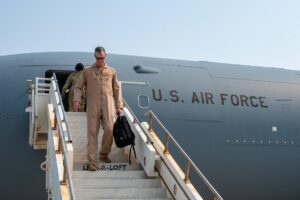
The Remote Vision System 2.0 (RVS 2.0) for the Boeing [BA] KC-46A Pegasus tanker will likely have a fielding delay of less than a year, Air Force acquisition chief Andrew Hunter said on Sept. 20. "As we were doing the critical design review [CDR] on RVS 2.0, there were some changes that were identified by the team," Hunter said in response to a question at a media roundtable at the Air & Space Forces Association annual conference. "That's why we…














